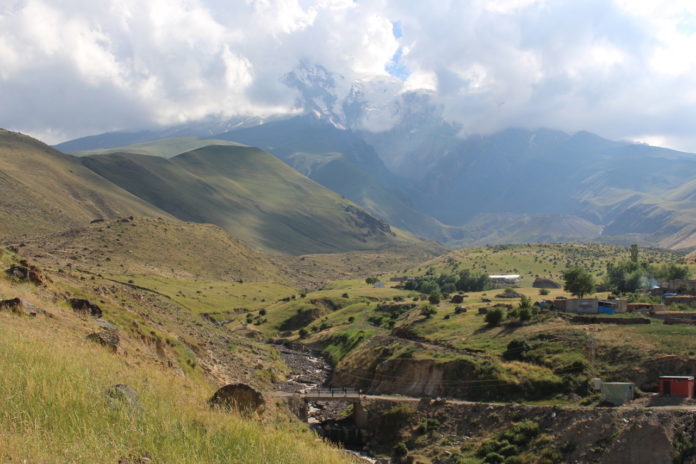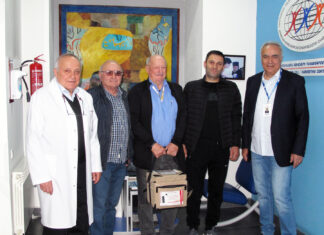By Hovsep Daghdigian
KAMARIS, Armenia — Kamaris is a village in Kotayk marz (province) with a population of about 2,000, according to figures from 2001. There are reportedly Bronze Age tombs in the vicinity. Atop the hill past the old and new cemeteries are scant remains of an old Persian settlement.
Adjacent to the old cemetery is the small Soorp Astvatsatsin church, rebuilt in 1258, but on a much older foundation, with extensive inscriptions in “coded” classical Armenian. This form of script often has multiple letters inscribed upon each other making decipherment difficult for non-specialists. According to an inscription on the church, its construction or renovation was financed by a wealthy woman from the village. Villagers indicated that during Tamerlane’s invasion of the region he apparently viewed Soorb Astvatsatsin with favor, and thus decided not to destroy it.
Nearby is a small, crudely-built chapel, recently constructed, but built on the foundation of a holy site probably from the 12-14th c. Within the chapel are remnants of much older stonework.
Nearby is the remnant of what once was a beautiful 18th-century home built in classic Armenian architectural style by a wealthy family. The most recent owner of the house, the granddaughter of the original owners, did not want to live there. An Armenian film producer, who produced an award-winning film in that house, offered to buy the house and preserve it as a museum while providing a home for the granddaughter in Yerevan. The granddaughter refused, abandoning the house which was then sold off piece by piece as construction material. Neighboring villagers lamented the loss of such a beautiful structure containing lovely balconies and a tonradoon.
The main church in the village, Soorb Hakob, was the primary focus of our visit. This large church was built in 1840. A small inscription at the entrance memorializes the destruction of the village of Akori, an Armenian village high up on the slopes of Mt. Ararat, during a devastating earthquake in 1840. This was the same year the church was built. Below this inscription another disaster is cited. About eight years later, locusts ruined Kamaris’ crops. Over the church’s altar is a large mural whose style was heavily influenced by Czarist Russian religious art. The church was renovated around 1980 (during the Soviet era), but needs renovation again. Following independence, renovation of the church began but now remains negligently undone. The wall opposite the altar is bowed out; it is buckling with large cracks in the masonry near the windows. The interior floor was partially torn up and never repaired. Protecting the structure from water and ice damage remains completely and negligently ignored. This structure urgently needs first aid. The villagers we spoke to were very concerned about the church’s survival.










